To the brave may come the vision of the Valkyrie.
Dave Lee
The pathways lead us on since the screaming Lord awoke
Some heed unto the Need when the secret keys were spoke
The bridge wends ever on into worlds both dark and bright
Some hear the inner voice where the silence speaks aright
The journey has no end since such was never meant
Some feel beyond the veil where the ashen spear was lent
The following description of the PROCESS that the Elder Futhark embodies, is purely SUBJECTIVE. I neither claim that my description of the Futhark is ‘true’ in any objective sense nor that it is of any value to anyone else than me. So why present it to others? Well, I would like to think that it inspires others how Runes can be applied on a individual level beyond the general presentation of each Rune as an ‘isolate’, seperate Stave.
A few years ago, when I was doing STAV with a few companions, I was taught to go through a series of ‘Tai Chi’-like movements of which every one was a Rune Stadha (but we were doing this with the Younger Futhark). I’d like to think of doing this with the Elder Futhark as a means of actualizing the whole cosmogonic process (that the Futhark embodies) in oneSelf. One could also sing through the whole Futhark or do the Stadhas & sing the Runes simultaneously. The idea behind this is to anchor the Runes in one’s psyche, so that they can become associated with certain states of consciousness. 
Of course, it’s necessary to do some research and Runic Meditations before one can go through the whole Futhark. But after having stated the obvious I’d like to suggest the idea that the cosmogonic process (the ‘creation’ of the world) is not something that has happened once in a distant past, but that it is an ongoing process. It’s what Goethe called „dieses ‘Stirb-und-Werde’“ („this ‘Die-and-Become’“) that the Runic Process can symbolize and stimulate in the psyche of the seeker. Further I like the idea from Jewish Mysticism that „in the beginning was the Word“. As Galdor is a form of verbal Magic and each Rune Sound (I especially think of the „Kernel-Sounds“ as Thorsson calls them in Rune-Song, p. 33/34) is associated with a certain ‘cosmic’ / magical (cosmogonic ?) energy, it follows that each time we sing consciously the Runes with full concentration, we create the world(s) anew. Magic is then the methodology of re-arranging the world(s) (within or without) by projecting the sonic & visual energy of a particular (combination of) Rune(s) into the cosmos at will.
One word about the Übermensch: I was thinking about my use of the word ‘Übermensch’ in the Third Aett and if it could disturb some readers. But given the fact that the readers of Elhaz Ablaze are surely not ‘mainstream’ & must be rather anarchic spirits, it should follow that you are not ‘brainwashed’ by mainstream media. ‘Übermensch’ (superman) doesn’t imply the idea of ‘Untermensch’ (subhuman). The latter is a perverted creation of the Nazis, not Nietzsche himself. The opposite of ‘Übermensch’ is not the ‘Untermensch’, but ‘Mensch’ (human). It’s my conviction that the Elder Futhark describes an ‘evolutionary’ process on several levels: the cosmonogonic / cosmological and psychological / spiritual level. The ultimate aim of the Elder Futhark on the psychological / spiritual level is, perhaps, the Immortalization of the Soul / Consciousness of the vitki. Such a magician could be considered as a human being that has reached a divine level of existence and all traditions of ancient wisdom have some kind of a word for such beings, for example Xian (in Daoism), Bodhisattva (in Tibetan Buddhism), or Einherjar (in our Heathenism Tradition). I consider the word ‘Übermensch’ as an accurate term, because such a Rune Master is considered to have reached a level that is more than human (which doesn’t mean that he isn’t a human anymore). Yes, of course, this is speculation! It’s my opinion, personal belief, UPG (‘Unverified Personal Gnosis’) – whatever you want call it, dear. My ideas below are inspired by several sources mixed with my own intuition. The sources include diverse artists (bands) & authors like Fire + Ice, Death In June, Ironwood, Chris Travers, Leon D. Wild, Dave Lee, Jan Fries, Sweyn Plowright and Norbert (who taught me STAV for a while). However, the foremost inspiration has been the body of work created by Edred Thorsson – and, of course, my ‘Deep Mind’.
Each Aett has a certain ‘feeling’ attatched to it & represents a certain level of Initiation. I have given every Rune a ‘sentence’ that I somehow associated with each Rune in some of my Runic Meditations (some of them are taken from the lyrics, in part or as a whole, from the bands mentioned above). Then I try to put every Rune in the context of a certain stage of development. The First Aett describes the cosmogonic process (more or less), then I ‘jump’ from that macrocosmic to the microcosmic level (this happens somewhere inbetween Kenaz, Gebo & Wunjo). Please keep in mind that this description is not at all a final piece, but rather a fragment that reflects a part of my understanding of the Runes. Please regard it as an exercise in ‘poetry’ rather than a metaphysical interpretation of the Runes. At some point, it has been suggested, one should write one’s own Rune Poem. I haven’t yet reached that point. However, here we go!
THE FIRST AETT (The Beginning of the Universe / Spiritual Childhood):
FEHU („Eternal Fire. My Being broadens itself over the Vastness of Space!“):
Fehu is the primal movement, the ever extending fire emanating from Muspelsheimr. This eternal extention becomes
URUZ („UR-Form and Form-Giver. I begin to wax and thrive!“):
Uruz is the vital force that shapes all things. Audhumla is licking the Giant Ymir out of the frost that emerged from Niflheimr. As the forms are eternally shaped by Uruz, another force originates:
THURISAZ („Shifter and Resistance-Breaker. My Will is Coming Into Being!“):
Thurisaz is the necessary agent that breaks through all resistance. The three forces of Fehu-Uruz-Thurisaz are so primal, chaotic and ancient that they can only be perceived – in the context of cosmogonic processes – as ‘blind’, unconscious, gigantic movements.
ANSUZ („Ancestral God-Conscioussness. I Give myself to mySelf Eternally!“):
It’s only now that the first consciousness emerges in this evolutionary process that becomes conscious of itself (the First God, Odhinn) – this is the mystery of Ansuz. The triad Odhinn-Vili-Vé dismembers Ymir & creates the universe. This results in
RAIDHO („Holy Order. Rightly I Ride Along the Runic Roads!“):
Raidho – the Holy Order emerges from the sacred consciousness of Odhinn-Vili-Vé. From the Holy Order enflames the spark of knowledge and creativity.
KENAZ („Controlled Fire. I enflame the Holy Spark.!“):
Kenaz is the Promethean Fire given from the Gods to Men. Thus, for example, the discovery of making fire reflects man’s divine ability to use knowledge creatively, which leads to new skills that man continually develops and improves. This is the realm and power of Kenaz. It is also the fire of passion and sexuality, which leads to ecstasy when controlled and used wisely.
GEBO („The triple Gift. The more I Give, the more I Get!“)
Man receives the triple gift (Gebo) from the Gods: the Body (Lík) symbolized by the Tree is ensouled by Life-Breath (Önd) & Consciousness (Ódhr). „Wind and Thought have shaped the Trees.“ (Ian Read) As man fully develops these faculties he reaches
WUNJO („Strength Through Joy, Joy Through Strength. I balance the forces within mySelf!“):
Wunjo represents a perfectly balanced & harmonious state that the aspiring vitki experiences as Joy. Wunjo also embodies the sacred bond of friendship and the Joy experienced in a community. Man is a social animal, but the Runer must necessarily be also a lonely wolf.
Here, in the First Aett, man is spiritually still innocent. The end of this process, Wunjo, is the aim of the naive mystic and in a negative aspect this state can become the obsession for the wooly cotton- brained New-Age romancer. But to the Rune Magician Wunjo is only a necessary requisite.
THE SECOND AETT (The ‘Catastrophes’ & Ordeals of the Magician / Spiritual Maturation):
HAGALAZ („Crisis Leads to Enlightenment. Hail the White Grain!“):
Man’s spiritual childhood is interrupted by a shock that initiates a process of transpersonal growth & spiritual maturity. Hagalaz is the seed of destruction that has encoded in it the seed of enlightenment: the Hail-Stone.
NAUDHIZ („Need-Fire. Seeker, overcome thyself!“):
Naudhiz represents the hardship of life. The Need-Fire is created. This is the necessary friction to test the will of the magician. Finally, it brings progress in his magickal development.
ISA („Silence of Ice. Silence all the senses and listen to the Voice of Silence!“):
In the process of these distressful transformations the vitki must find a silent place within himSelf. By cultivating silence the magician finds a resourceful state within him that is the Region of Pure Will. Thus he develops a mature sense of self without an excessive ego („body armor“). However, nothing ever remains the same…
JERA („Cycles within Cycles. Through Faith in mySelf and my Rhythm I move easily through the Cycles of Life!“):
The vitki realizes that for everything there is a season. As he sows so shall he reap. By observing the cycles of nature he learns about the cosmic ‘laws’. He realizes that the processes in the macrocosmos mirror operations of the microcosmos (his soul). They become allegorical, alchemical keys that bring forth procedures to explore the soul. Thus he finds the World-Tree…
EIHWAZ („Yggdrasil, Pattern of the Worlds. The Fire of the Yew brings Immortality to my Soul!“):
The vitki wanders between the worlds and is taught the mysteries of Life and Death: Eihwaz – Great Initiator! Here he learns about the worlds and their ‘laws’.
PERTHRO („The Three Norns. I Weave my Wyrd with Mighty Deeds!“):
Perthro teaches about the Wyrd and Orlög. Understanding his Wyrd the magician knows there is only one thing worth pursuing: to strive for the Divine within. This is the mystery of
ELHAZ („I strive for my Higher Self. Elhaz Ablaze!“):
Elhaz expresses Man’s longing for the Higher Self. This leads man along the thunderbolt-path, along the serpentine spiral (the shape of Sowilo), to his divine consciousness. Elhaz ignites the Holy Fire of
SOWILO („Eternal Sun, Guide me along the Serpentine Path to the Knowledge of my True Self!“):
Sowilo: the sacred, silent, synthesizing Self is experienced fully for the first time! Here the goal & the way are the same. The Sacred Self is the aim of the magician, but it is also the necessary requisite to travel along the initiatory path without the danger to get lost & become mad. One of the very fascinating features of Runic Mysticism is the fact that this is not the end of the spiritual journey. Rather it’s another beginning.
THE THIRD AETT (The Great Initiations of the Rune Master / Spiritual ‘Übermensch’):
The third Aett shows the Path of the Rune-Master and his Great Initiations…
TIWAZ („Supporter of Heaven, Mighty Pillar of the Sky God!“):
Tyr is the Lord of Law and the Guardian of the Holy Order. The Irminsul is established from within to without. The transcendent centre within the psyche must be fully established – the esoteric location that some German Rune Magicians of the early 20th century have called ‘Thule’.
BERKANO („Pregnant Mother, Container of Strength!“):
Berkano teaches secret growth, the process of Becoming, Being, Decaying and ‘Rebirthing’ is used for the power of the magician. Thus he becomes aware of the Other within. Our ancestors have thought of that quality as a Being independet of the magician’s Self:
EHWAZ („The Golden Wedding. I strive for the Alchemical Marriage!“):
This is „the lonely path towards the eightlegged steed“ (Ian Read). The Fylgja / Valkyrie reveals herself to the vitki. He’s on the cutting-edge of overcoming Death. Marr er manns fylgja („The Horse is the Fetch of Man“).
MANNAZ („Consciousness is Holy. What is Whole, is Holy!“) :
The bipolar structure of man’s consciousness reflects the divine origin of the human psyche. The conscious Mind / Intellect (Hughr) and Remembrance / Intuition (Myne) unite and are enflamed with Inspiration by the Wode-Self. The Well of Urdhr streams eternally from ‘below’ (Jung’s ‘Collective Unconsciouss’ / Myne) to ‘above’ (the Hughr). Thus the ‘super-consciousness’ (Roberto Assagioli) is created at the centre between those three faculties (Hughr, Myne, Wode).
LAGUZ („The Waters of Eternity open up. Flow Along the Runic Rivers!“):
Laguz is the final test. The ancient waters of Life-Force, the Ur-Waters streaming from Niflheimr, pervade man’s Mind, where the accumulation of wisdom & his transpersonal growth become an endless process, if he’s on the path of the Rune Magician, because Laguz is a crucial point. I would like to define the path of the magician against the path of the mystic here (for the sake of playing around with ideas):
You could say that these forces – Laguz – are so strong that the sense of Self will be absorbed by the ancient waters (the path of the mystic). Mystics often speak of this experience as an ‘oceanic feeling’ (cosmic consciousness). One could say that the mystic cures his fear of death by confronting Nothingness (Dave Lee). He gives in & submits his sense of Self to the Life-Force (Laguz); the cosmic Ur-Waters of Laguz ‘consume’ him. He looses his individuality & dissolves into that Cosmic Ocean like a drop of rain. From the mystic’s point of view the following happens: He realizes that he has no individuality, it’s an illusion – he has always been the Ocean. Thus he looses all fear. In the context of this article, I want to argue that, if any mystic could follow that initiatic path so far, his journey ends here.
The magician instead has to ‘seperate’ his Ek from that turmoil, because magick is about control. LHP magicians are control freaks! But this Ek is not the ego at all, as Dave Lee so aptly demonstrates in his Master Work Bright from the Well. Rather it is Spare’s Kia, Verdhrfölnir or the ‘Ultimate Observer’ (de Ropp’s ‘Fourth Room’ or Lilly’s ‘Center of the Cyclone’ or Osho’s ‘The Watcher on the Hill’). To stay in the metaphor from above: The rain drop does not dissolve and mingle with the Cosmic Ocean, but remains its individuality.
INGWAZ („The Principle of Wihaz. Gestation and Transformation. Man, Become God!“):
By isolating himself from all these changes around him, the vitki starts a controlled process of absolute transformation. The storage of the Life-Force of Laguz leads to the gestation of the Seed of Immortality. This seed becomes the ‘Body of Light’ (or what the Vajrayana-Buddhists call the ‘Diamond Body‘). „Man finds his Ing“Rune Games, Osborn & Longland).
DAGAZ („The Morning of the Magician. Atheling, Awake!“):
Dagaz dawns as the darkly shining Noxia-Licht („Night-Light“) of Enlightenment. This Rune is central to the understanding of the essence of Odhinn. Dagaz leads directly to the synthesis of all polar extremes. It’s the Paradox that lies at the centre of the Mystery of Wodhanaz. By uniting the opposites (f.e. ‘Man’ & ‘Woman’) a third thing is born (f.e. a ‘Child’). This is an eternal process. The journey has no end since such was never meant.
OTHALA („Eternal Soul. I, the Winged Ing, repossess my own Space!“):
Othala represents the individuated psyche (in a Jungian sense). This is man’s reclaimed estate of kingly existence, his Immortal Soul. „There are Thrones underground and Monarchs upon them.“ (Coil)
Putting Dagaz as the last Rune of the Futhark could symbolize that the process of ‘uniting the opposites’, that finally leads to what has been called enlightenment, is eternal and never-ending. On the other hand as Fehu symbolizes movable possession (the extension of the Self), Othala represents the end of this process, symbolized by the ‘rewon’ kingly estate (the perfected Self).
I’m in the beginning of learning Galdor. It seems to be a very difficult art. The Runes – the ‘tools’ of Galdor – seem to be of such a mysterious nature that they never can be understood fully. When you move nearer to them, they seem to move further away from you. This lies at the centre of the mystery of Runa. It has been said that the fatalistic acceptance of the fact that Runa will never be fully grasped is the hallmark of a true Odian (a seeker who does not worship Odhinn, but rather emulates the way of Odhinn). Such a vitki explores the dark magick of the Germanic LHP. Let me conclude with the words of a magician, whose words never fail to illuminate my mind:
“In galdor-type magic, the self is fully-conscious at the moment of projection of the will. In other words, the magical self extends its will at the same time the observing self sees it all happen. The observing self is unfazed by the focus of the magical self – context is not lost, even though the magical self is in a narrow, focused, fanatical state. This is the nature of this kind of magic – that the observing self is present throughout it, and that the consciousness of the wizard is doubled.
So, what we are really developing in our magical work is the ability to split our attention in this way, to bring the observer-perspective into even our most passionate and intense trances. The path of the magician emphasizes both the transcendent and the immanent, worldly aspects of life, in contrast to the way of the mystic, who seeks to transcend the whole show.”
(Dave Lee, Bright from the Well, p. 134).
Reyn til Runa.
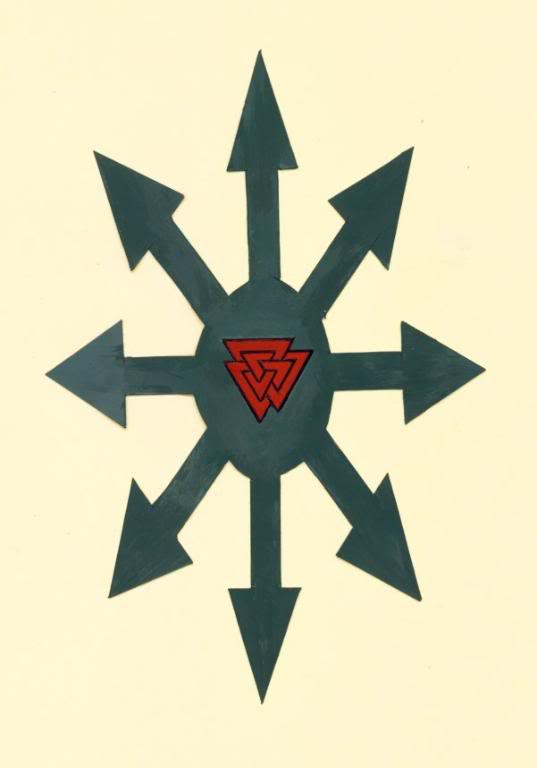
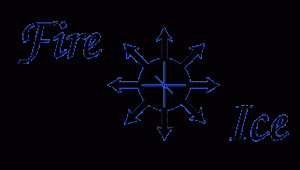
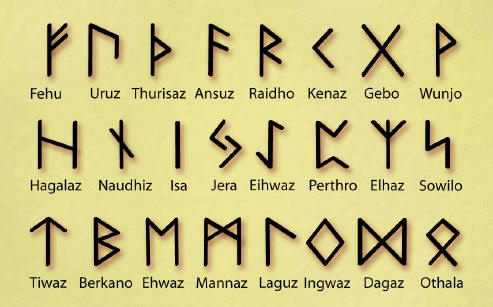

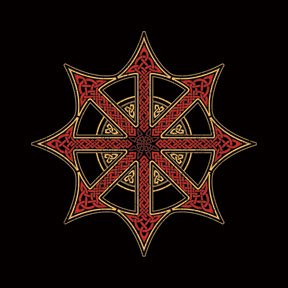

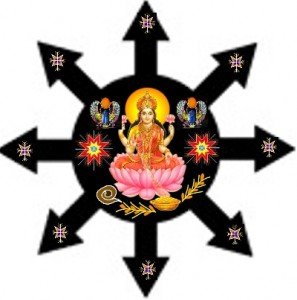
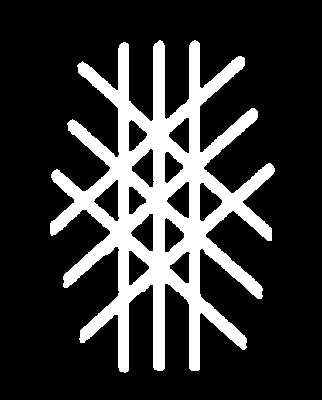
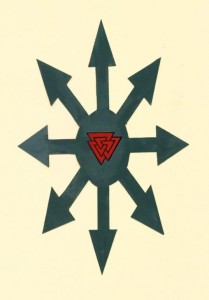
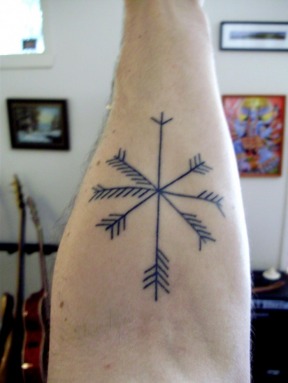 Before all that
Before all that 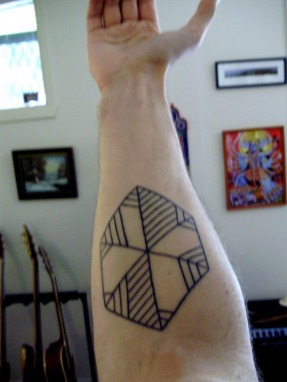 Frey is also an incredibly masculine, phallic god – towards all existence he turns his giant and unquenchable cock. His is an unfettered manifestation of eros – his way is that of immense and unending lust for life. Whatever comes before him excites his erection – his thirst for union with all of being can never be slaked. Truly he is a super-abundant god.
Frey is also an incredibly masculine, phallic god – towards all existence he turns his giant and unquenchable cock. His is an unfettered manifestation of eros – his way is that of immense and unending lust for life. Whatever comes before him excites his erection – his thirst for union with all of being can never be slaked. Truly he is a super-abundant god.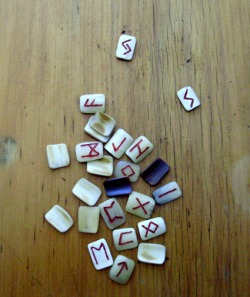 It seemed inevitable that I would put up a post here on doing rune readings. It’s such a stock piece of Heathen subject matter, but I feel that my approach is sufficiently odd to be worth documenting.
It seemed inevitable that I would put up a post here on doing rune readings. It’s such a stock piece of Heathen subject matter, but I feel that my approach is sufficiently odd to be worth documenting.